Laowa AF 10mm F2.8 Zero D Review
Dustin Abbott
February 20th, 2024

It has finally happened! In celebration of their 10th year anniversary as a lens maker, Laowa has developed their very first autofocus lens – the Laowa AF 10mm F2.8 Zero D. In typically Laowa fashion, they have chosen an extreme focal length as their starting point rather than something a little easier. The Laowa AF 10mm F2.8 has an incredibly wide angle of view (130.6°), so make sure your shoes aren’t in the shot! What’s more, this is a beautiful and unique looking lens, with a whole new look for Laowa that is immediately striking. And the autofocus performance? Like they’ve been doing it for a decade. There are some typical Laowa flaws, but a lot of strengths in this new lens. Let’s dive into it together in either my video review below or in the rest of this review.
Follow Me @ YouTube | Patreon | Instagram | Facebook | DA Merchandise | Flickr | 500px | X
Thanks to Laowa for sending me a review loaner of this lens. As always, this is a completely independent review. *The tests and most of the photos that I share as a part of my review cycle have been done with the Sony a7RV along with the Sony Alpha 1 that serve as my benchmark cameras for Sony lenses.
__________________________________________________________________________________________________
Laowa has long done extreme wide angle lenses. One of the earliest Laowa lenses that I can remember covering was a 12mm F2.8 (I reviewed it about 8 years ago), which was, at the time, the widest such full frame lens I had reviewed. This lens is wider still, obviously, and it will give you a very different perspective of the world. I was right on top of the “eternal flame” monument outside of Canada’s Parliament building, but you can see that not only is the entire monument in view, but also multiple buildings all around.

Not only has Laowa included autofocus for the first time, but the new 10mm lens also sports weather sealing – a Laowa first.
Using a lens this wide is an exercise in extremes, and you will end up getting far closer to everything that you dreamed. Want to photograph a building? You have to get pretty close! I stepped onto the edge of the sidewalk in front of this parliamentary office building, and still the whole curve of the sidewalk was included in the shot.

But maybe you have been looking for something extreme, and, if so, the Laowa AF 10mm F2.8 definitely fits the bill. And, at $799 USD, this lens falls well beneath the typical price of a full frame lens covering 10mm, and that won’t hurt either! But is it worth buying? Let’s explore that together…
Laowa AF 10mm F2.8 Build and Handling
I’m doing this review on a Sony E-mount version, and there will also be a Nikon Z-mount autofocus version available. Because Canon has still not opened their platform to license autofocus, the RF and Leica L mounts of this lens will be manual focus only. The version I’m testing has 5 aperture blades to allow for clearly defined sunstars (bokeh won’t really be a thing here!):

Interestingly, however, Laowa notes that there will be a 14 bladed aperture version available at a later date, though they note the sunstar/sunburst effect will be reduced.
The winners here are Sony E-mount and Nikon Z-mount users, as they have access to an autofocus lens that works well and makes Laowa a more accessible brand, because switching to autofocus means a few other things as well. The inclusion of electronic contacts means:
- We get full EXIF data – information like the lens name and aperture value for the shot is now included.
- Information for IBIS (in body image stabilization) is automatically transferred so the lens stabilization works properly.
- Any manual focus aids dependent on electronic communication will now work.
What we don’t seem to get (at least in the pre-release copy I tested) is in-camera corrections. As we’ll see, distortion is so low that it doesn’t really need correction, but vignette is another story. This is a chronic weak area for Laowa wide angle lenses, and, as we can see below, the JPEG has just as much vignette as the RAW images.

That’s unfortunate, though that is something that could potentially change in the future.
The Laowa AF 10mm has a completely different look from previous Laowa lenses. Previous Laowa lenses had a black anodized metal look, while this new lens has a cobalt blue/grey type finish that looks fresh and unique.
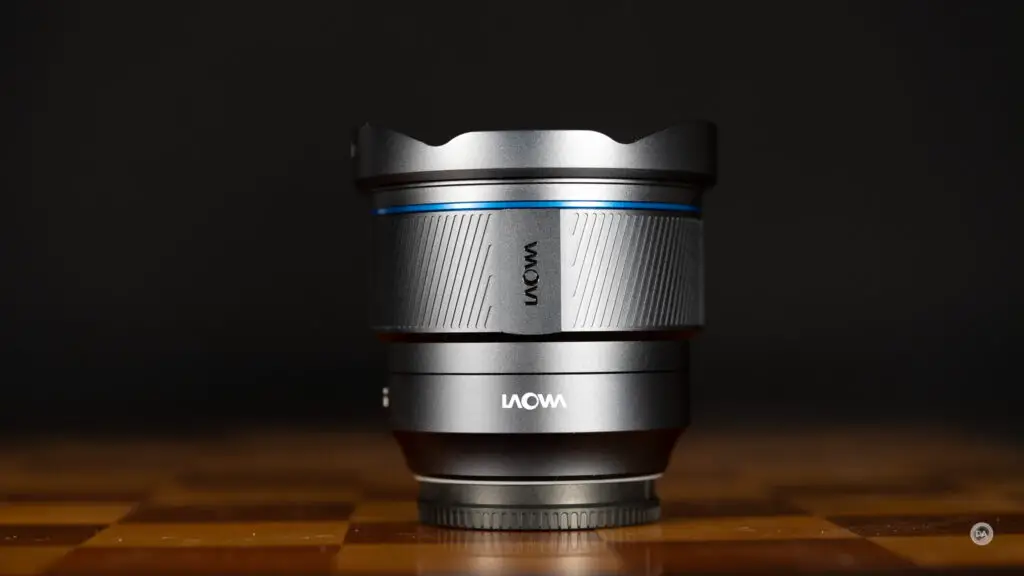
The lens has a squat, chunky profile that is also quite a departure from the long, slim 12mm F2.8 Zero D. The AF 10mm F2.8 is 82mm (3.23″) in diameter and just 70.8mm (2.79″) in length. Laowa has managed to retain traditional thread-on filter threads in a common 77mm size for this lens (quite an accomplishment on an F2.8 lens this wide!)
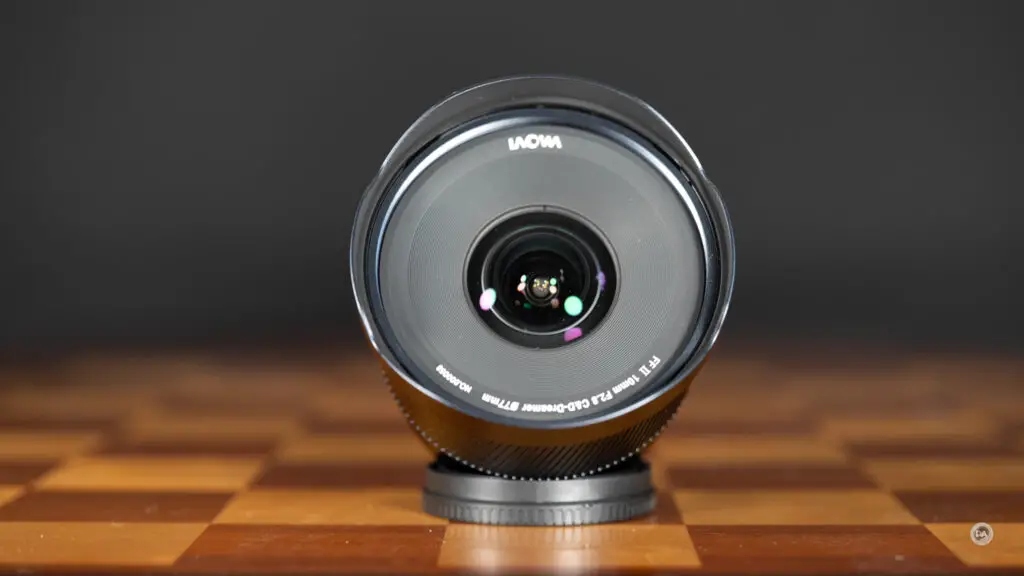
The weight is very moderate at 420g (0.925lbs), though the materials still feel like metals rather than plastics. The 12mm F2.8 weighed nearly 200g more, so that light weight is welcome.
The lens sports an AF/MF switch on the side of the barrel, which is always welcome, and even more so here as it is a reminder that this is an autofocus lens.
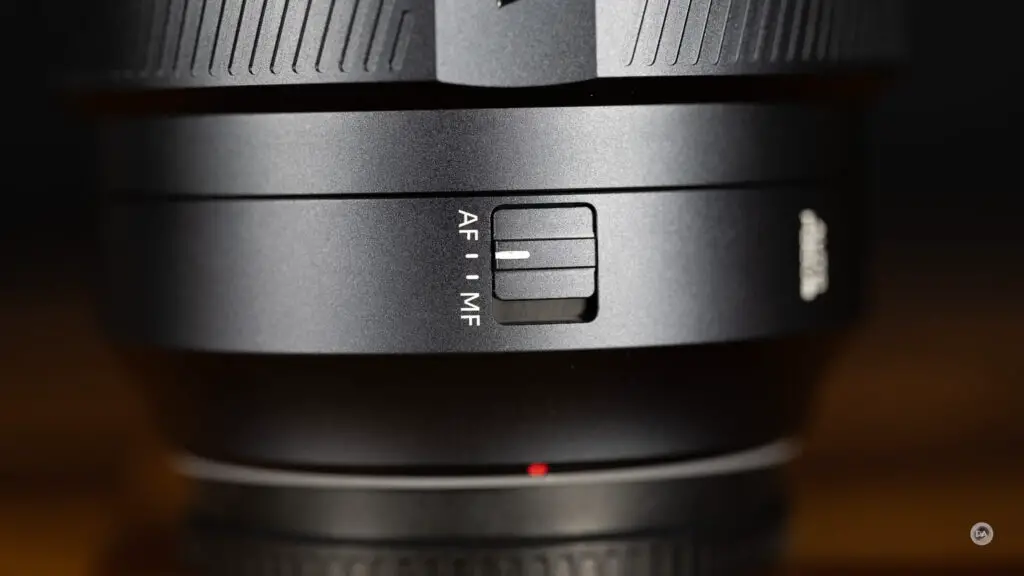
Most of the lens barrel is dominated by a wide manual focus ring. It’s different than typical Laowa fare due to this being a mirrorless autofocusing lens, which means that focus is now focus-by-wire (input on the ring will be routed through the lens’ focus motor). What’s gained is that on my Sony bodies the active focus area is automatically magnified to allow for visual focus confirmation. The damping is nice and smooth, allowing for good focus precision.

There is a flat section on each side of the ring with the brand logo stamped there. What’s interesting is that due to there being no hard stops on a focus-by-wire lens, those logos could end up pointing anywhere. But they can be used to some advantage as it does give you some point of visual reference for a focus throw. The ring is not linear, however, but speed specific. The focus throw is about 170° if you move quickly, but can be as much as 360° if you move slowly.
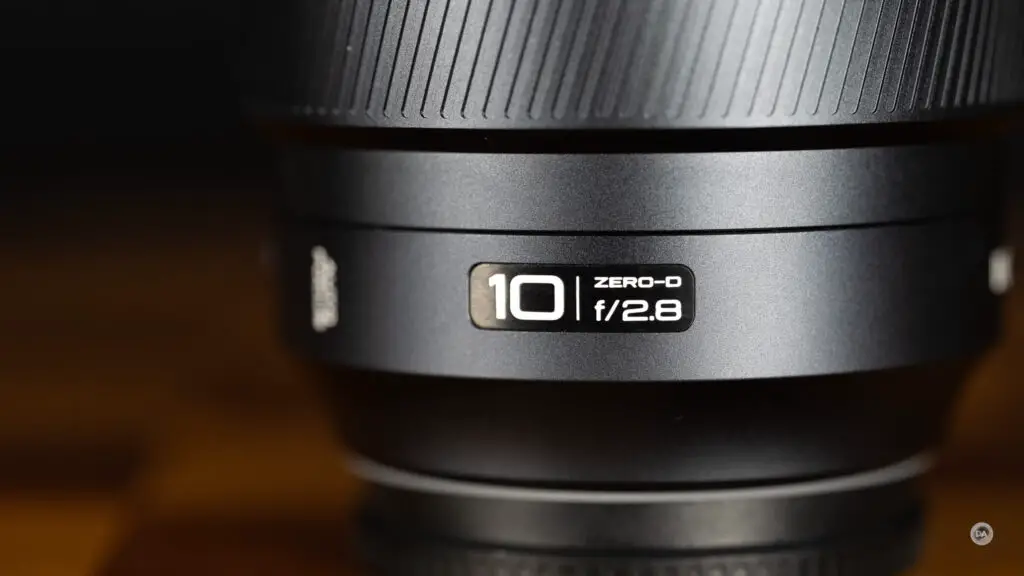
There is some badging on the lens along with a nice scalloped curve near the lens mount that has a nice visual look and tactile feel.
There are electronic contact points along with a nice weather sealing gasket in a faint blue color. It’s nice because it is visually different than everything else. There are no other internal seals, however, so weather resistance is limited to just this gasket.
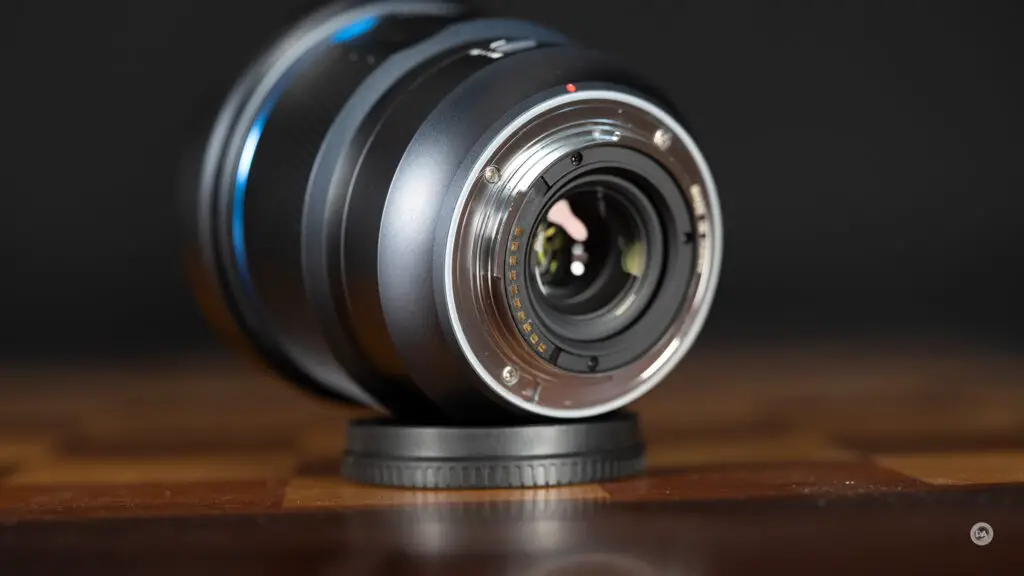
The lens has an extremely shallow lens hood that can be removed (though with a fair bit of force) and even reversed. It won’t block much sun and is more than to protect the front element from bumps.
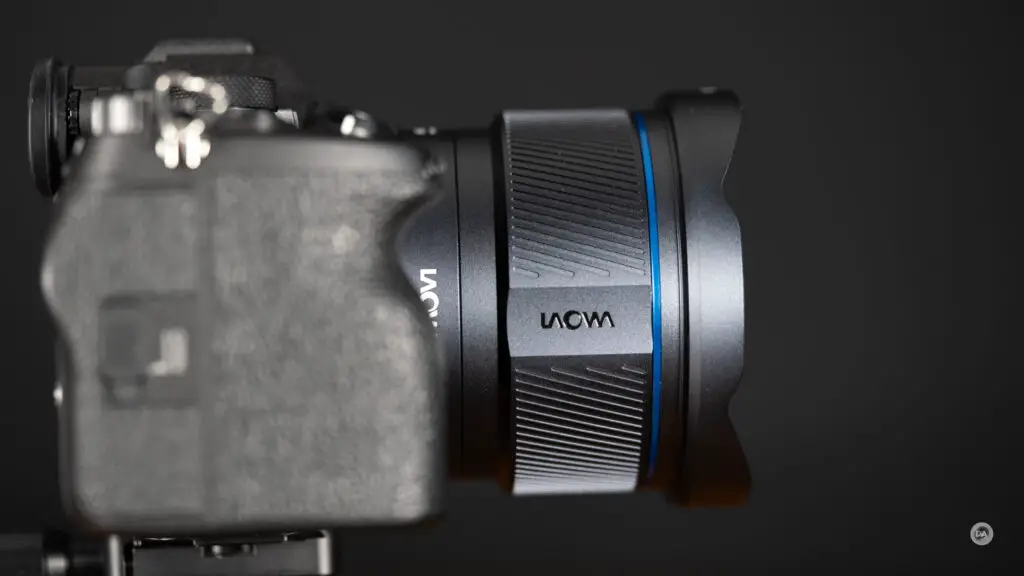
The front cap is (thankfully) a traditional pinch camp which fits easily into a pocket.
There is no aperture ring, so the aperture iris will be controlled from within the camera. As noted earlier, there are just five aperture blades to allow for easy sunstars.
Minimum focus distance is just 12cm (4.72″), which means you can get close enough to your subject that you will almost be touching it.

If you can get sufficient light on your subject despite the lens looming on it, you can get a very nice 0.24x magnification, which looks like this:

Getting that close to subjects in the real world is rarely going to be feasible, so you might need to settle for lower magnification. The good news is that for video capture you can get close enough to pretty much bump into your subject and the lens will keep on focusing!

The Laowa AF 10mm F2.8 is a nice looking lens that will look great mounted on your camera. It is nicely sized, and is light enough that it won’t be a strain to bring along. I applaud Laowa for building something that looks different, and in this case, I think the new design language looks very sleek and modern. I’m a fan!
Autofocus and Video
This is Laowa’s first ever autofocusing lens, but you would never know it from the performance. Autofocus is fast, accurate, and smooth. The focus motor (probably some type of STM motor) is very quiet; I can only hear the slightest whirring if I press my ear right up against it. I literally have nothing negative to point to on the autofocus front, which is very impressive from a first effort.

Now, to be fair, this is a fairly easy place to start with autofocus. Such a wide focal length means that most everything is in focus most of the time. You can see from the photo above that even though I am very close to Nala when composing this shot the rest of the room isn’t super out of focus. If I were to focus at 1 meter (a little over 3 feet) the depth of field would be from right in front of the camera to infinity…even at F2.8.
I got down very low in front of an escalator early in the morning when no one was around to emphasize the foreground, and, while there is a little motion blur in the foreground from the movement of the steps, you can see that the depth of field extends all the way up the escalator to the floor above. This is shot at F2.8, so depth of field, if anything, would increase a bit if I stopped the lens down.

But neither do I want to minimize what Laowa has accomplished here. This feels like a mature focus system, not a first time effort. There’s no glitches on either of the Sony bodies, no pulsing during infinity focus (something I’ve often seen with wide angle lenses), and the focus motor feels smooth and refined.
That makes this a great lens to walk around with and grab quick shots without the deliberation often required with a manual focus lens.
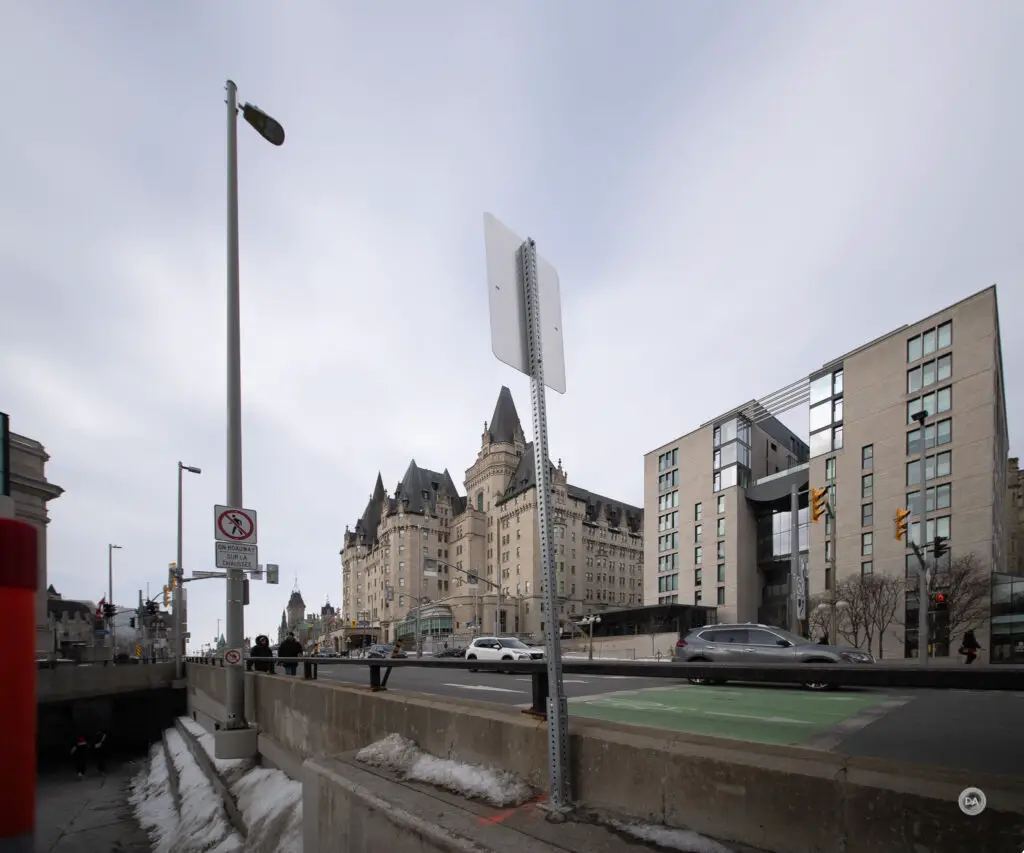
That shot above has been edited to achieve more a shift effect on the building lines.
The one thing you do have to be careful with with such a wide angle lens is composing with people near the edges of the frame…particularly if you are composing up to included buildings. People will get very distorted and stretched near the edges of the frame. People will rarely be happy to be depicted like this:
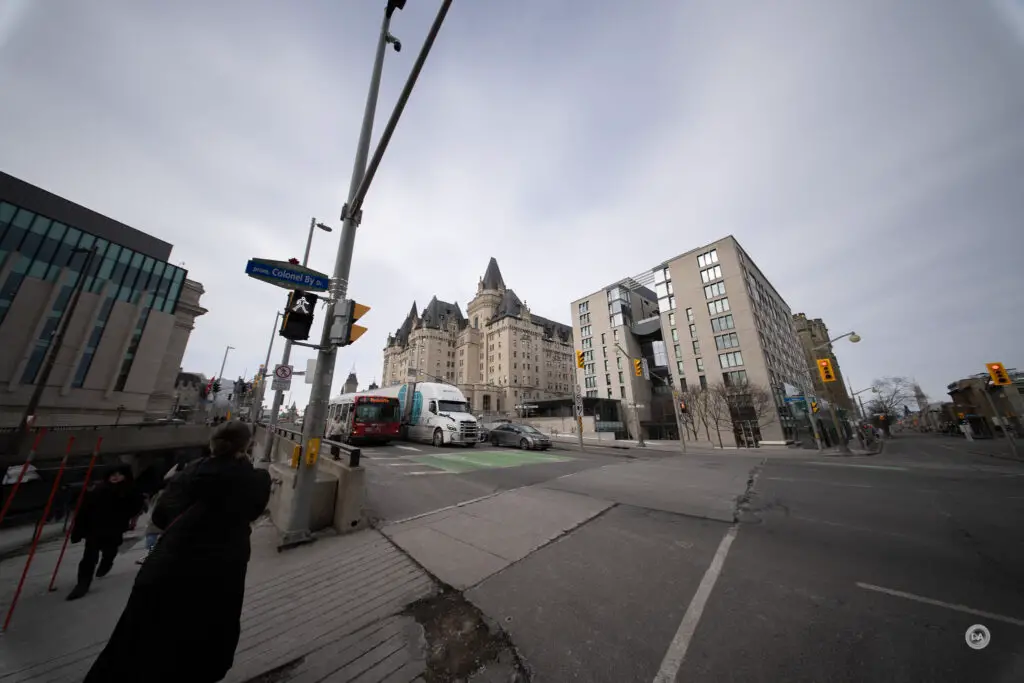
That keystoning effect is just the nature of the focal length; it’s not actually distortion.
Autofocus speed is plenty fast, as there is relatively little focus change needed (the focusing group doesn’t have to move far). In my outdoor focus speed test where I use a little garden statue I found that it would quickly grab the eye during that focus adjustment.
I was also pleased with my video tests. Focus pulls are minimal, as noted, but there is no visible steps or hunting. In real world video clips focus was confident and did not pulse in or out. My hand test where I alternately cover and the uncover the camera’s view of my face was smooth, with good transitions from my hand to my eye and vice versa. Focusing breathing is extremely minimal, largely because there is little focus change taking place even when going from close to infinity.
I’ve tried to be fair here in offering up the caveats due to the nature of the focal length, but the truth of the matter is that I don’t think I’ve even seen a better first effort at autofocus from any company making this transition before.
Image Quality Breakdown
So far this new Laowa lens is coming up roses, so how about the optical performance? It is here that the lens becomes a little more “Laowa familiar”, as while the Laowa AF 10mm F2.8 may not look or function like previous Laowa lenses, the optical performance is fairly consistent with what I’ve seen in the past. Both the strengths and weaknesses that I discovered are very similar to previous Laowa wide angle lenses I’ve reviewed.
This particular lens has an optical formula of 15 elements in 9 groups (including 2 Aspherical and 3 ED [extra-low dispersion] elements), which is very complex for a prime lens. It shows just how complicated making such a wide angle lens is, particularly when you couple that with a large maximum aperture and a flat front element (so that traditional filters can be used). I did a search on B&H Photo for the search terms “10mm” and “F2.8” and found ZERO full frame, rectilinear (non fisheye) lens available. The Laowa is not yet released at the time of this review, so it isn’t listed there. The fact that Laowa is tackling this unique focal length and aperture combination as their first autofocus lens is typical of this company that has not been afraid to take chances. The results are largely successful here, as while the focal length is extreme, the performance is very reasonable.
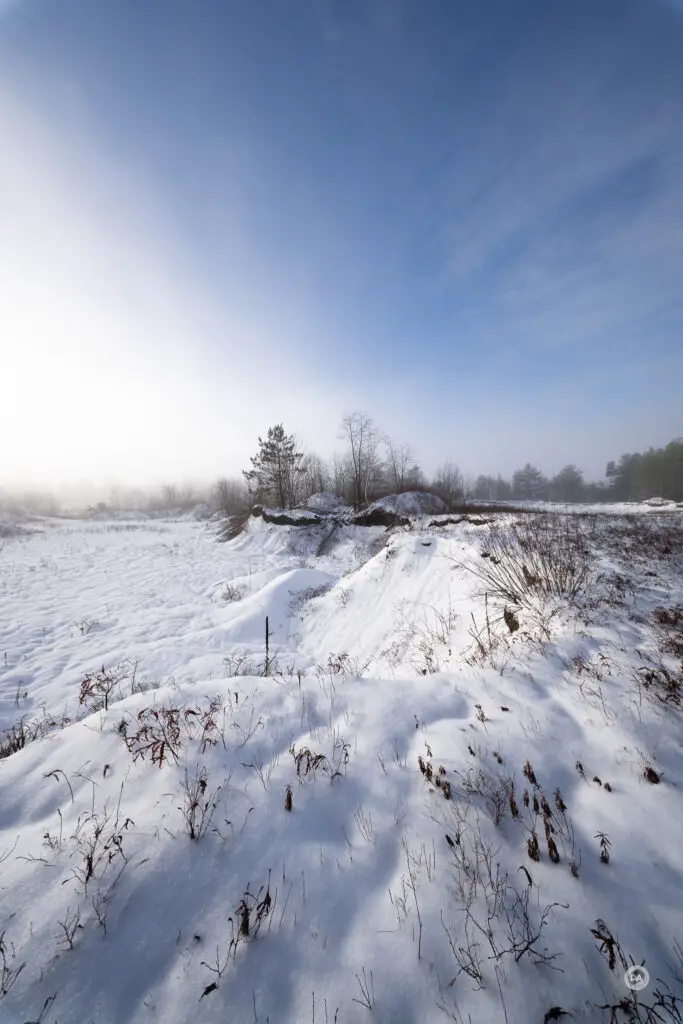
A look at distortion and vignette shows both a typical Laowa strength and a typical Laowa weakness.
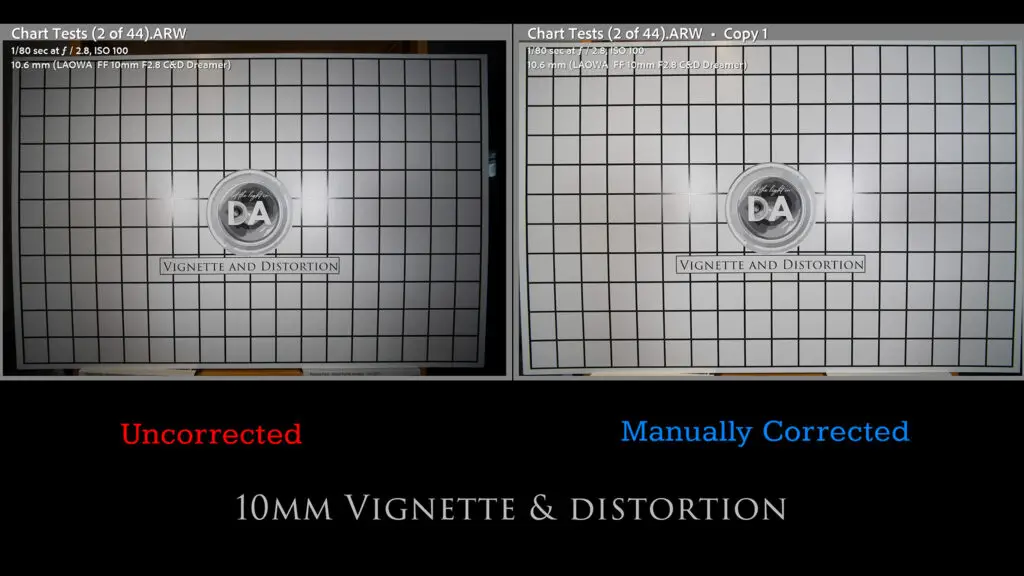
Laowa is VERY good at optical designs that reduce distortion. The fact that there is so little distortion (a tiny bit of barrel distortion) in such an extreme lens is pretty amazing and bests the performance of most other wide angle lenses that I have tested. Laowa calls the a “Zero D” lens (zero distortion), and, while the distortion level isn’t quite zero, this is an undeniably impressive performance.
But what Laowa isn’t very good at is designs that reduce vignette. While I only used a +3 to correct the distortion, the amount of vignette actually exceeds what I’m capable of manually correcting in Lightroom. There is over four stops of vignette in the corners, and that vignette improves but does not completely go away as you stop the lens down. Here’s a comparison of F2.8 and F5.6 from the uncorrected corners of a landscape image.
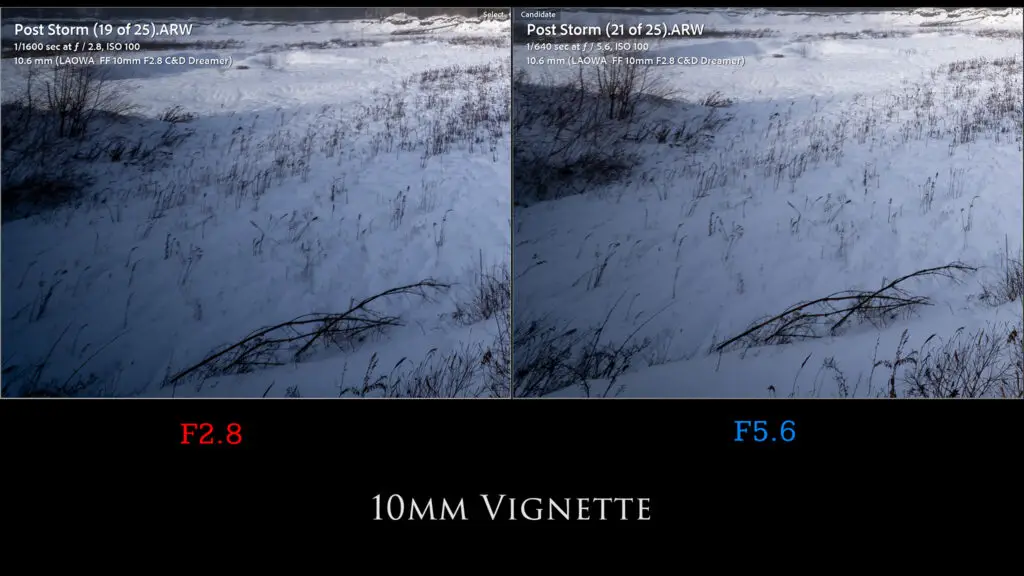
Snow always makes thing look worse, but you can definitely see that the vignette is heavy. You can use that vignette to dramatic effect (like the image below), but often it is going to need correcting.
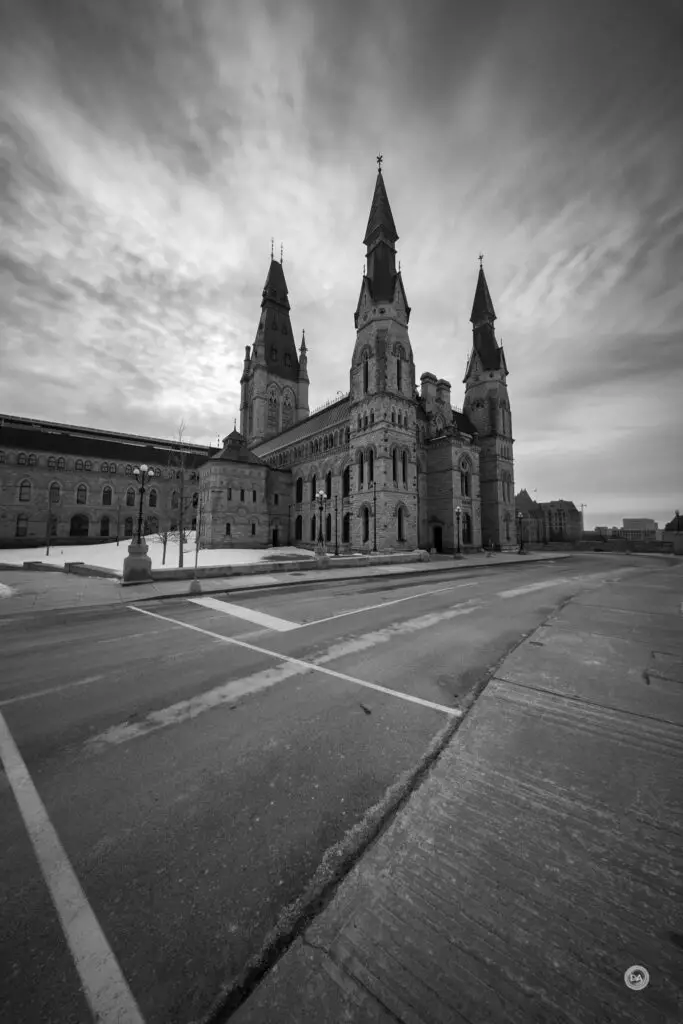
There’s one other little quirk related to vignette, and that’s a bit of a glitch related to “corrections”. I first encountered an issue like this with some Tamron lenses back on Canon EF. If vignette/shading correction was on, the camera would actually produce a weird effect in the corners of the image due to some software glitch. The lens was not actually compatible with the camera corrections, and so having that on would cause a problem. The same is true here, as if you have shading corrections “On” it will produce a little what area in the extreme corners that doesn’t actually help the real vignette is. You can see it here in the upper right corner:
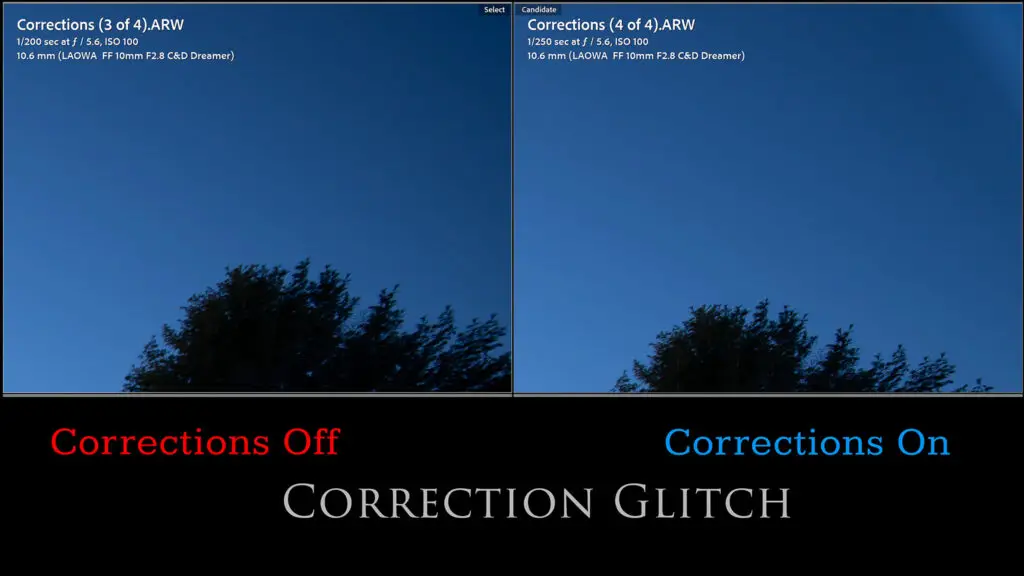
The effect was more pronounced on my Alpha 1 (shown above) but still present on my a7RV. You’ll want to turn shading corrections Off in your camera for now unless a firmware update in the future makes the lens compatible with in-camera corrections (which would be best, as this lens really needs vignette correction).
Longitudinal chromatic aberrations (LoCA) will rarely affect a lens like this because depth of field is so deep, so I was unsurprised to find that LoCA wasn’t an issue here. Wide angle lenses are for more likely to suffer from Lateral CA (LaCA) that occurs near the edges of the frame in areas of high contrast (like the transition from black to white on the edges of my test chart). You can see that there are mild amounts of LaCA here, but nothing significant.

If I looked at a pixel level I could see a bit of LaCA in some of my landscape images, but fortunately this is the kind of fringing that can typically be fixed by just clicking the “remove chromatic aberrations” button in your favorite editing software.
So let’s move on and examine sharpness and contrast. I’ve done these tests on my 61MP Sony a7RV. Crops are shown at roughly 180% magnification, while comparisons will be shown at 200% magnification. Here’s the test chart that crops will be sampled from:

And here are the crops from the center, mid-frame, and lower right corner.



One thing you’ll notice is that the center of the frame seems overexposed while the corners seem underexposed. The extremely heavy vignette of this lens does make getting a balanced exposure difficult. Images on your camera monitor will often feel underexposed, but if you look at the center of the image it might either be properly exposed or even a little overexposed.
Center sharpness is very good, while the midframe is a little lower contrast (but still sharp), while the corners show reasonably good contrast but the fine details aren’t as well resolved.
Real world results are pretty consistent with this. Detail looks very good in the inner 2/3rds of the frame, but corners are a little softer. Part of this could be the nature of such an extreme wide angle perspective, as objects in the corners will stretch…which inevitably will negatively impact sharpness. Here’s a real world F2.8 image, and it actually looks quite excellent everywhere save the extreme corners.
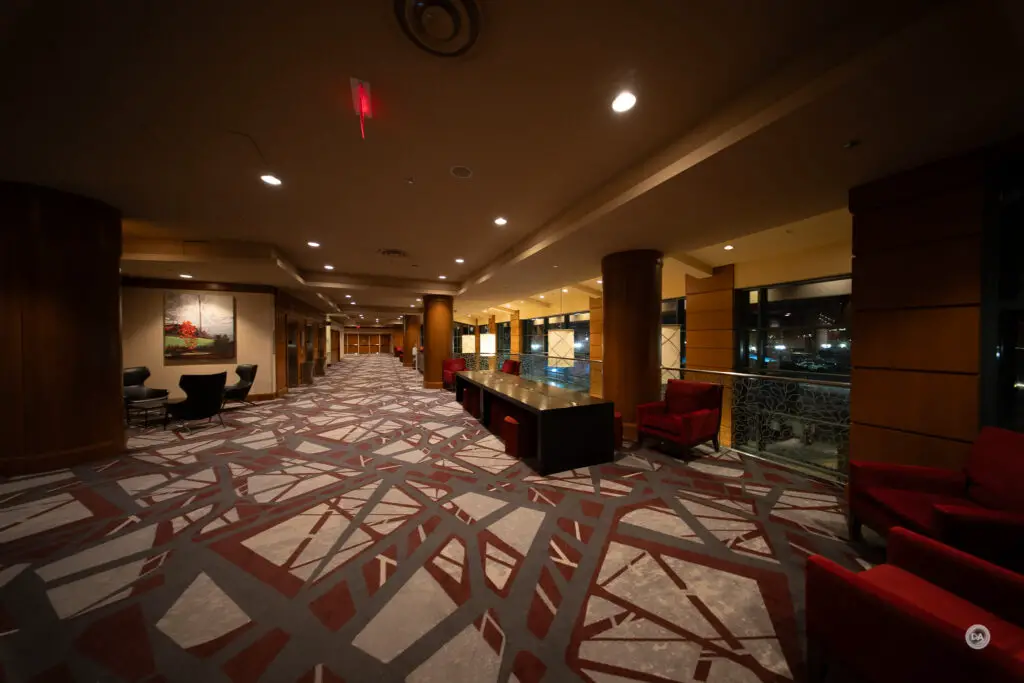
Stopping down to F4 makes only a mild improvement, but there’s a much more impressive increase of sharpness and contrast at F5.6:
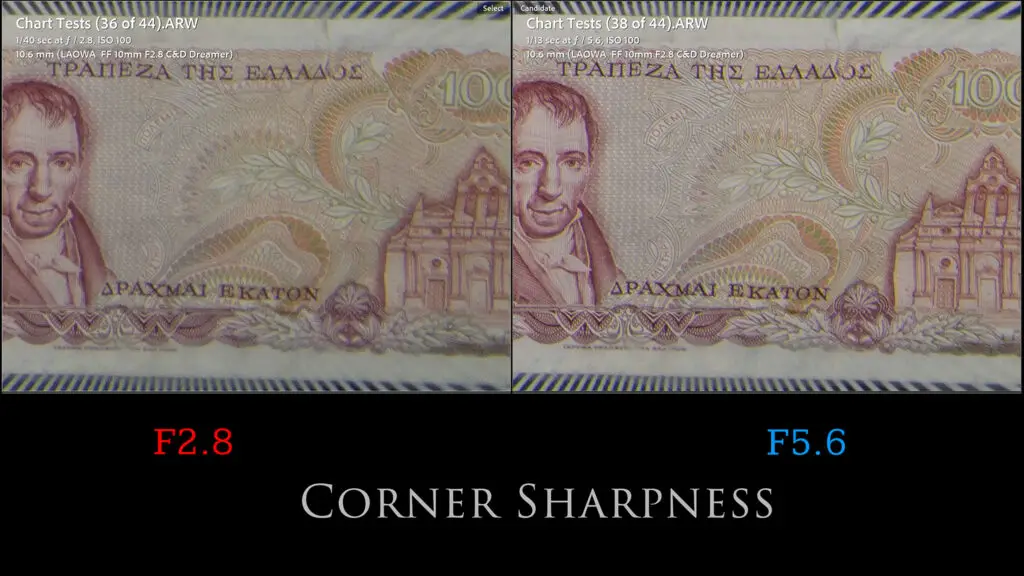
First of all, kudos to Laowa for managing to make such a wide angle lens that has such little field curvature. Often when I’m reviewing extreme wide angle lenses, I can hardly chart test them because the distance to the chart is so short and field curvature dictates that either the center or corners will be in focus but not both.
But you need to really want this extreme wide angle of view, as there are cheaper alternatives with even more sharpness. The standout is the Viltrox AF 16mm F1.8 (my review here), which can be had for a little over $500 if you use the discount code (it’s in my review). It’s sharper everywhere compared to the Laowa, though the center is closer:
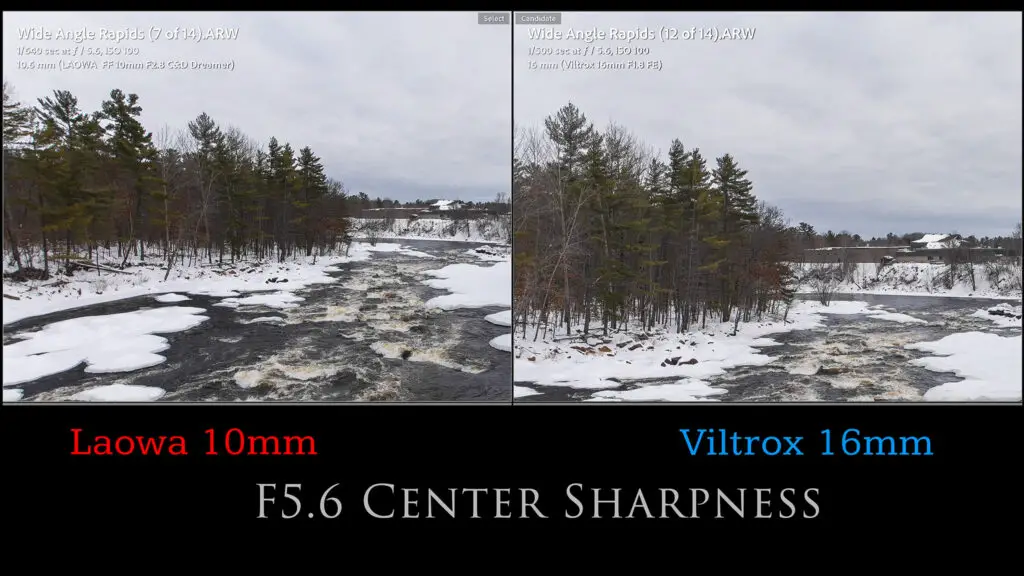
The corners aren’t even close, however. The Viltrox stays basically just as sharp all across the frame.

The Laowa is one of the best at 10mm, however, but my point is that not everyone needs such an extremely wide angle of view…and if you don’t, then there are superior options optically. I will note that the Laowa AF 10mm F2.8 is definitely a higher performer than Laowa’s own 10-18mm F4.5-5.6 zoom lens that I reviewed five years ago.
It takes a lot of skill to compose well with a lens this wide. You are really challenged to view the world with a different eye for composition. It’s pretty cool to be able to shoot out the window and include an 18 story tower in the hotel in the shot…while composing horizontally!
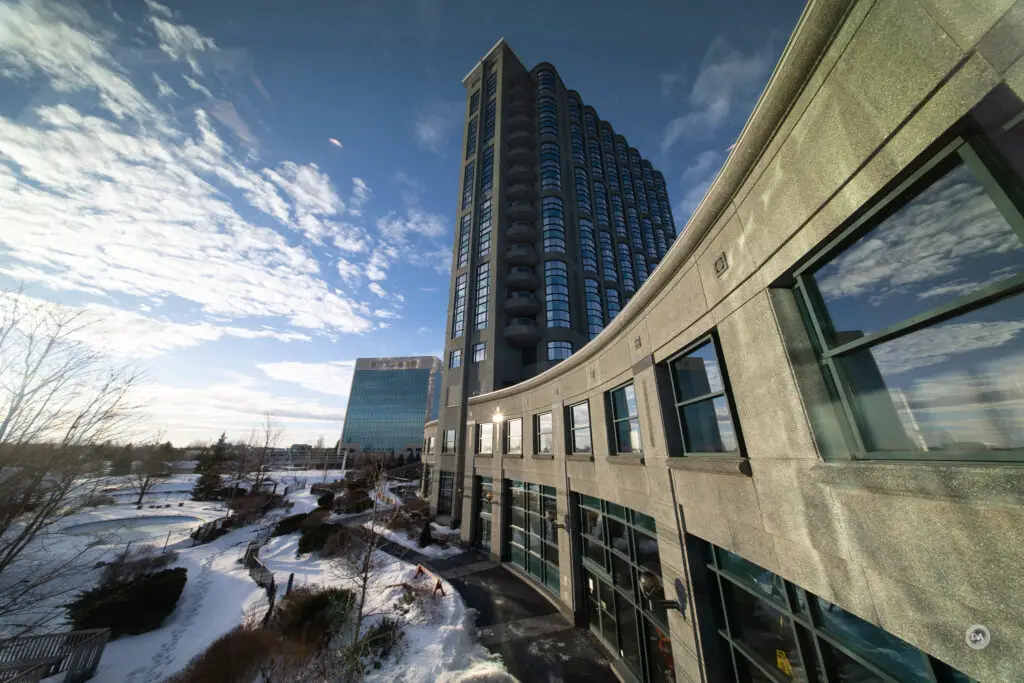
It also allows for dramatic views of tighter spaces, like this stairwell.

This lens is pretty much one of a kind, so choose it for the kinds of images that you can make with it rather than its optical superiority to less extreme lenses.
You’ll get peak performance across the frame at F8. There’s a noticeable improvement from F5.6:
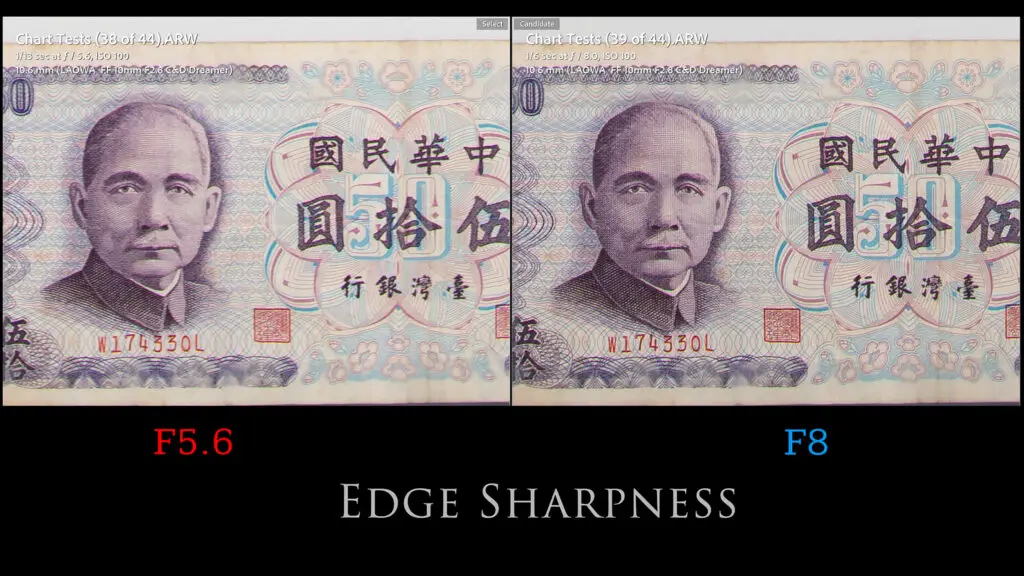
Diffraction arrives early on high resolution cameras, but the Laowa AF 10mm still looks good at F11. After that (F16, F22) the image will progressively soften due to the effects of diffraction.

It’s fairly pointless to discuss bokeh with a lens like this, as depth of field will almost always be too great to allow much to be out of focus. But if you’re desperate, here’s the best I could achieve:

What is interesting with a lens like this is to examine coma. A lens with such a wide angle of view could be a very interesting astrophotography option. The extreme vignette is a negative here, but fortunately coma control is fairly good. Stars grow a bit of a “tail” near the edges of the frame, but it’s not too destructive.
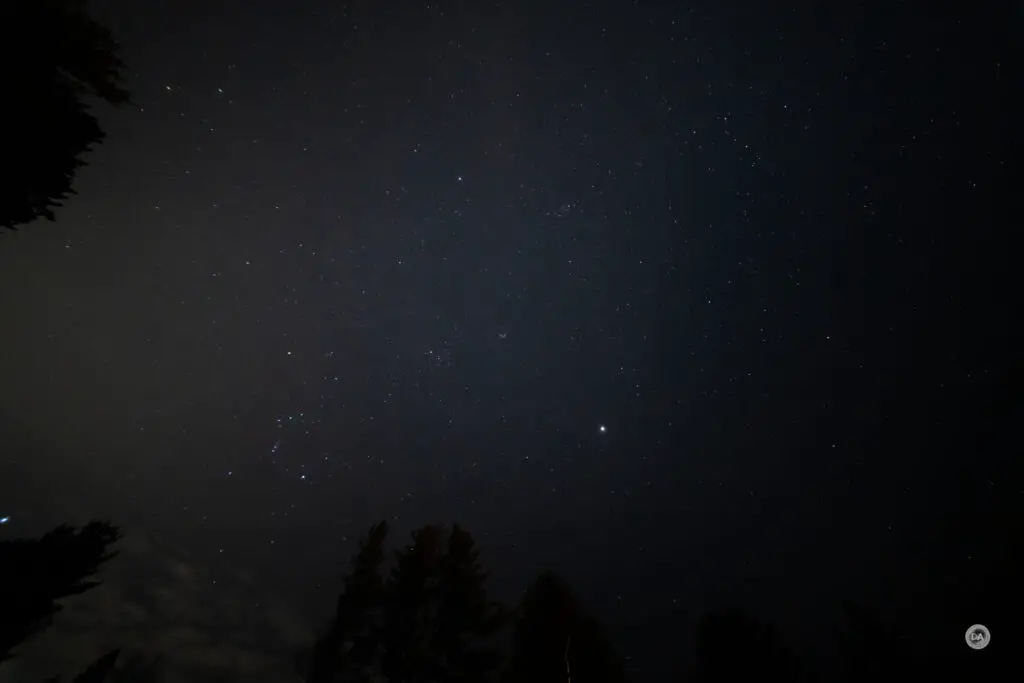


Flare resistance is quite good for such a wide angle lens. It’s not flawless (there are mild flare patterns at various apertures), but contrast is unaffected and there is nothing destructive in frame.
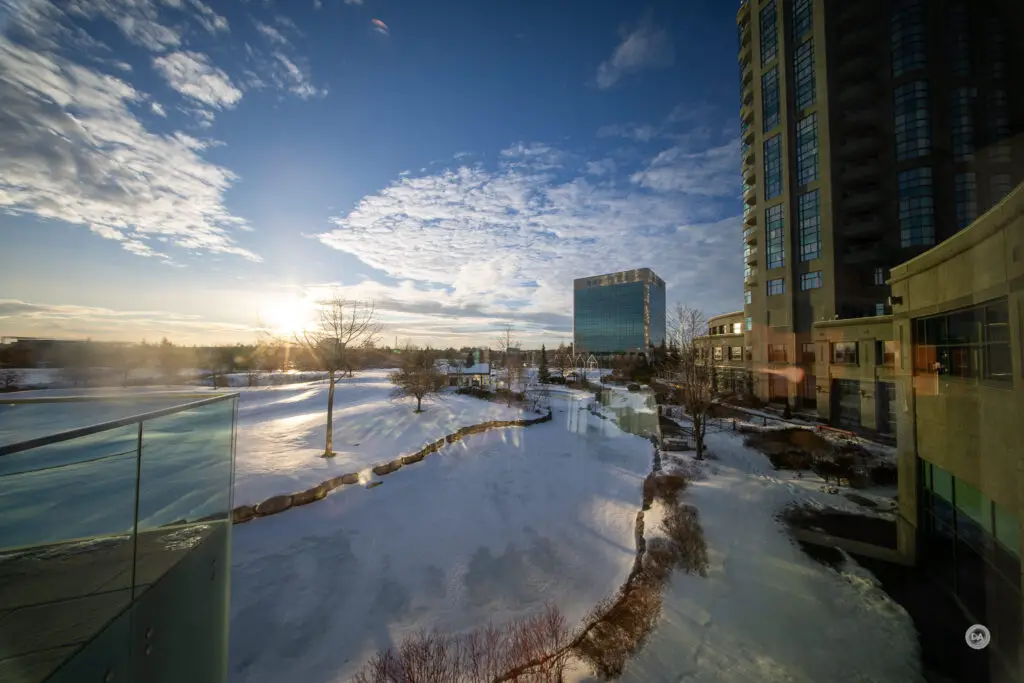
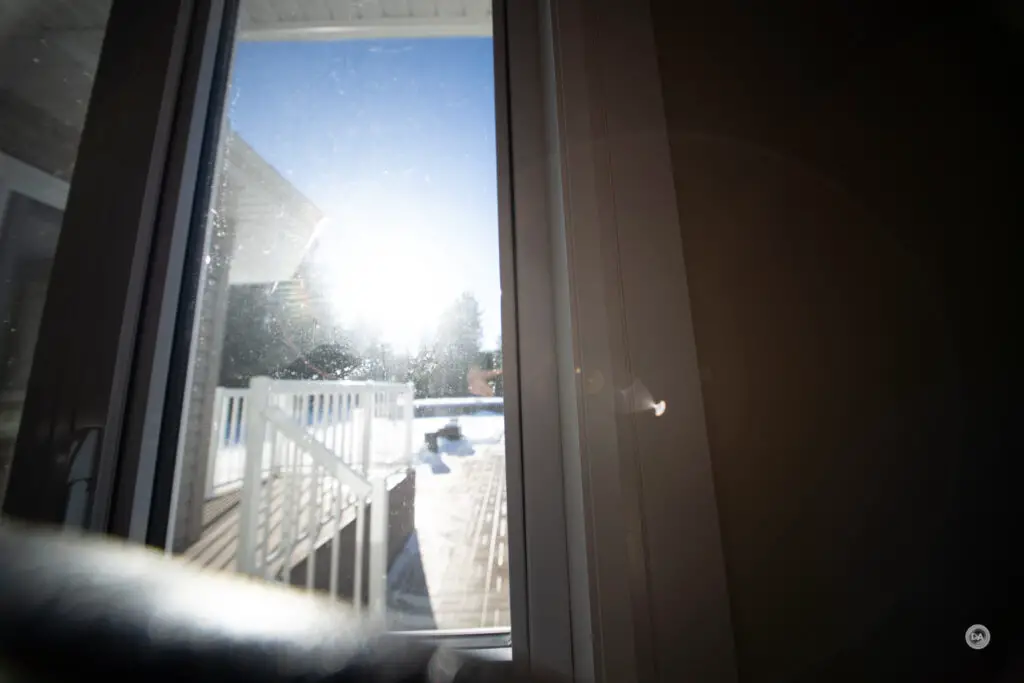
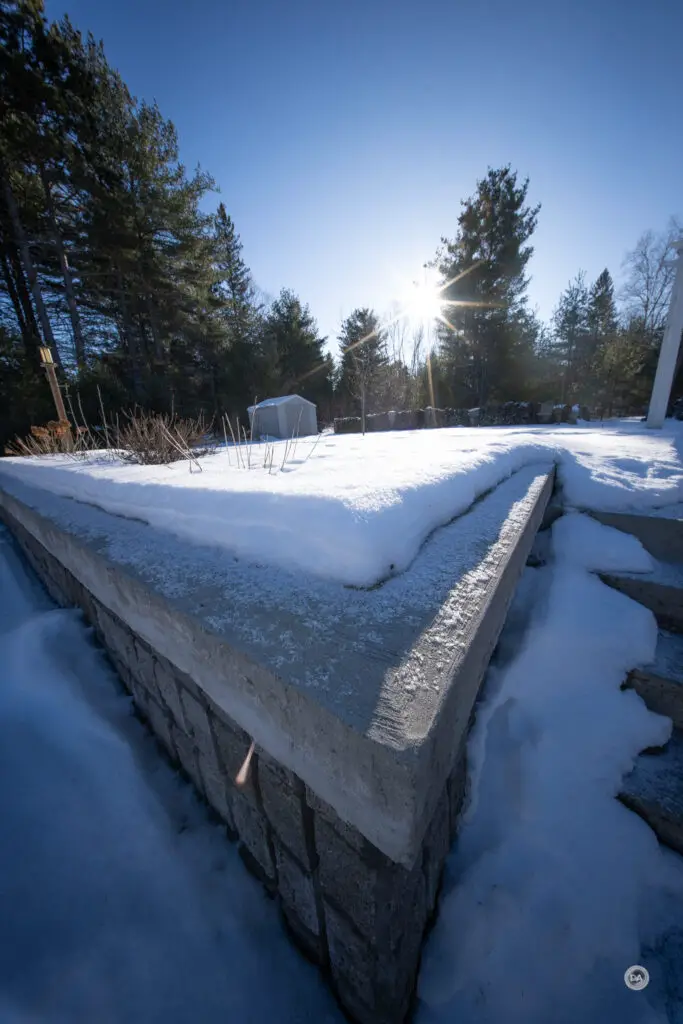
The straight aperture blades mean that sunstars are available early in the aperture range and look great. They are very distinct even at a medium aperture like F5.6:

The heavy vignette is the only serious issue here. I’d like a little more corner sharpness, but frankly it’s not bad for such an extreme wide angle lens. This isn’t the sharpest wide angle lens that I’ve ever used, but it is definitely the sharpest 10mm rectilinear lens that I’ve used. If you want to see more images, check out the image gallery linked here.
Conclusion
I’m absolutely delighted to see Laowa make the transition to autofocus. They’ve taken their time (they’ve been making manual focus lenses for ten years now), but it’s paid off in a surprisingly mature product. You would never think of the Laowa AF 10mm F2.8 as being a first autofocus lens, as it functions as effectively as any third party lens from well established companies. Arguably better, in fact, as there isn’t any of the pulsing during landscape shots that I sometimes see with other wide angle lenses. I’m really hoping that Laowa will bring this autofocus technology to some of their macro lenses, which will allow them to be more effective as general purpose/portrait lenses as well as doing macro.
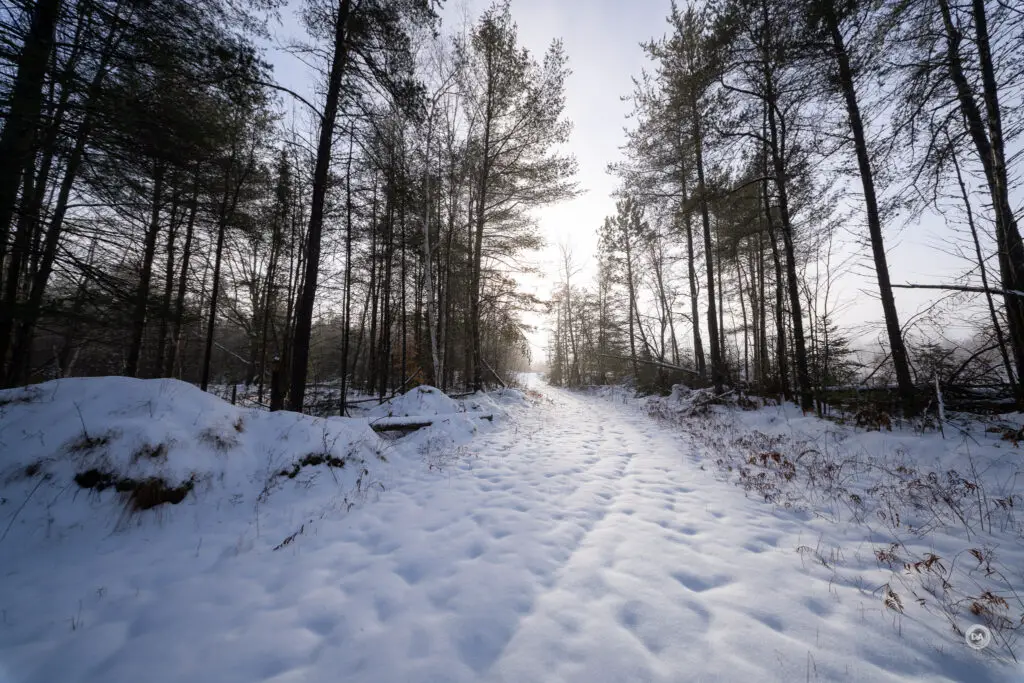
The greatest weaknesses are very heavy vignette and the fact that the lens doesn’t seem to have lens correction support in camera yet. Those two issues compound each other, and thus images will almost certainly need to be post processed…which not everyone likes to do.

But the good far outweighs the bad here. There’s a lot of very strong elements here, including the first time that we’ve seen a full frame F2.8 lens at 10mm (in a rectilinear design). It’s the first Laowa lens to get a weather sealing gasket along with their beautiful new design language. On top of that it comes to market at a reasonable price of $799 USD, which is actually $50 less than their manual focus 12mm F2.8 lens. Such an extreme lens won’t be for everyone, but there’s no question that Laowa nailed the transition to autofocus with the Laowa AF 10mm F2.8 Zero D lens. Job well done, Laowa!
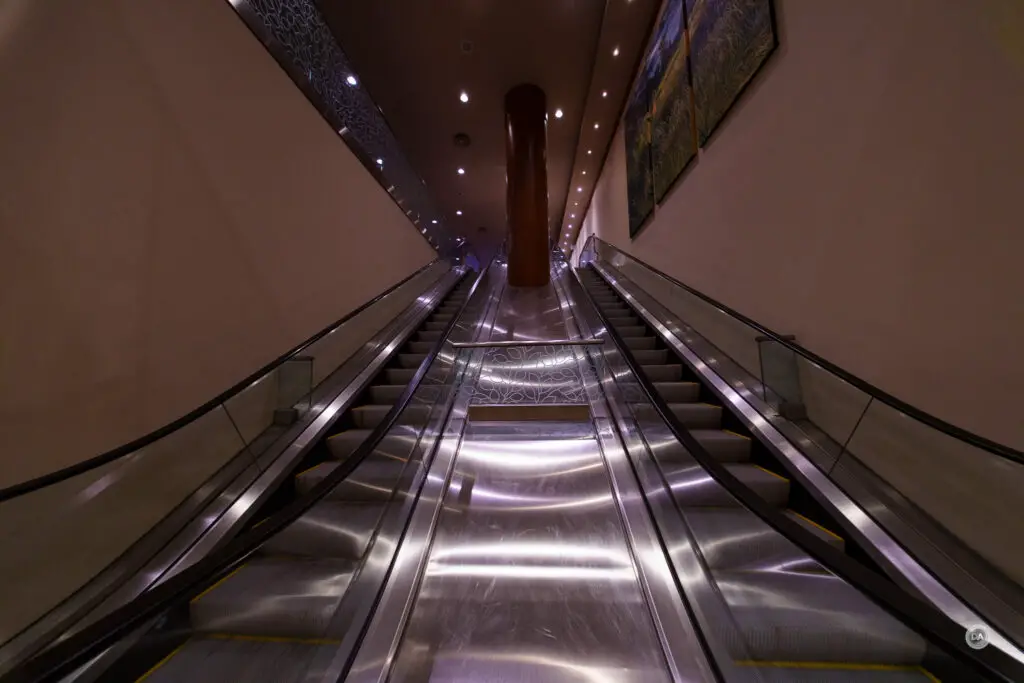
Pros:
- A great AUTOFOCUS lens – great focus performance
- Beautiful new design language that is functional and premium
- An extremely wide angle of view + large maximum aperture
- Low distortion
- Weather sealing gasket
- Stable video autofocus
- Ability to use traditional filters
- Good flare resistance
- Great looking sunstars
- Good coma performance
Cons:
- No in camera corrections?
- Heavy vignette
- Real world corners somewhat soft
_________________________________________________________________________
GEAR USED:
Purchase the Laowa AF 10mm F2.8 @ B&H Photo | Adorama | Amazon | Camera Canada | Amazon Canada | Amazon UK | Amazon Germany
___________________________________________________________________
Purchase the Sony a7RV @ B&H Photo | Adorama | Amazon | Camera Canada | Sony Canada | Amazon Canada | Amazon UK | Amazon Germany
__________________________________________________________________
Purchase the Sony a7IV @ B&H Photo | Adorama | Amazon | Camera Canada | Sony Canada | Amazon Canada | Amazon UK | Amazon Germany
_________________________________________________________________
Purchase the Sony Alpha 1 @ Camera Canada | B&H Photo | Adorama | Amazon | Sony Canada | Amazon Canada | Amazon UK | Amazon Germany | Ebay
_________________________________________________________________
Want to support this channel? Use these affiliate links to shop at: B&H Photo | Amazon | Adorama | Camera Canada | Amazon Canada | Amazon UK | Ebay | Make a donation via Paypal
Buy DA Merchandise https://bit.ly/TWIMerch
Keywords: Laowa, AF, Autofocus, 10 year anniversary, Laowa AF 10mm F2.8, Zero-D, 10mm, F2.8, Full Frame, Review, Sony Alpha 1, Sony a7RV, Review, Hands On, Dustin Abbott, Real World, Comparison, Sharpness, Bokeh, Flare Resistance, Autofocus, Image Quality, Sample Images, Video, Photography, let the light in, weathersealing, #letthelightin, DA
DISCLAIMER: This article and description contains affiliate links, which means that if you click on one of the product links, I’ll receive a small commission. As an Amazon Associate I earn from qualifying purchases.










 Nikkor Z 35mm F1.2 S Review
Nikkor Z 35mm F1.2 S Review  Kase AF 85mm F1.4 Review
Kase AF 85mm F1.4 Review  Fujifilm X-Half Review
Fujifilm X-Half Review  Nikkor Z 35mm F1.8 S Gallery
Nikkor Z 35mm F1.8 S Gallery 


